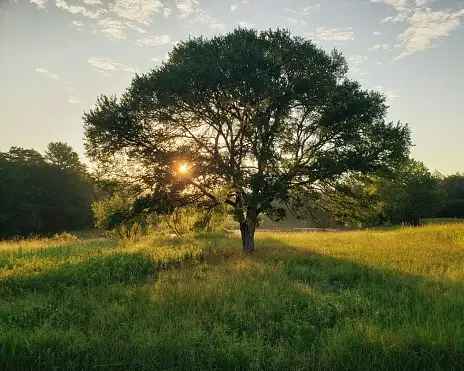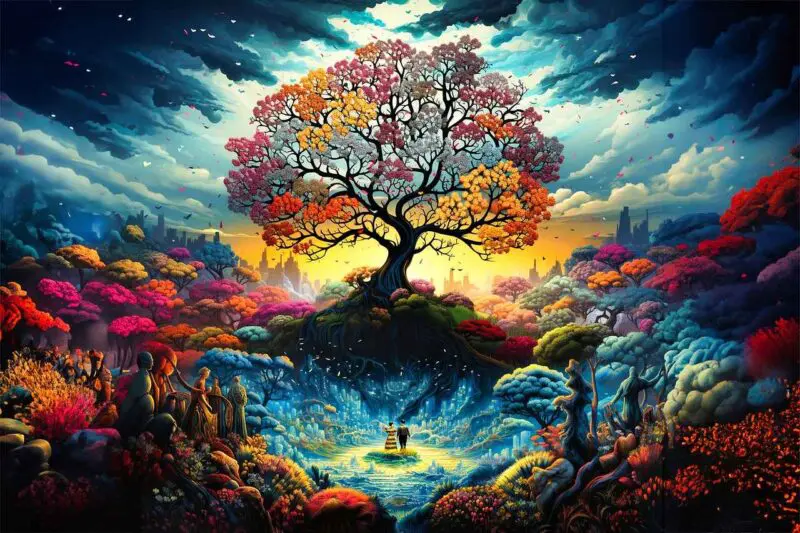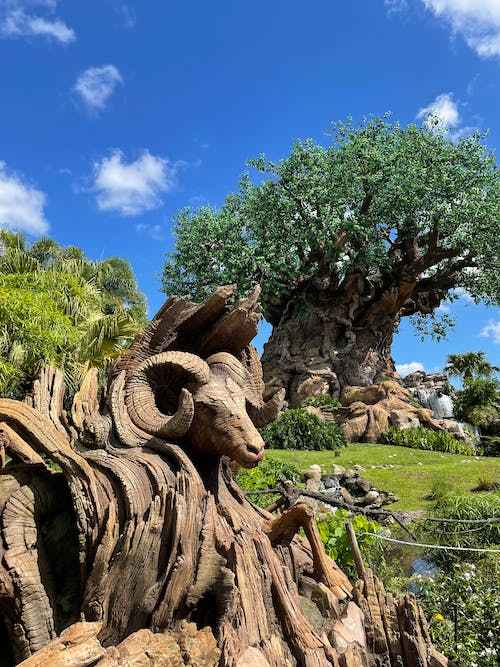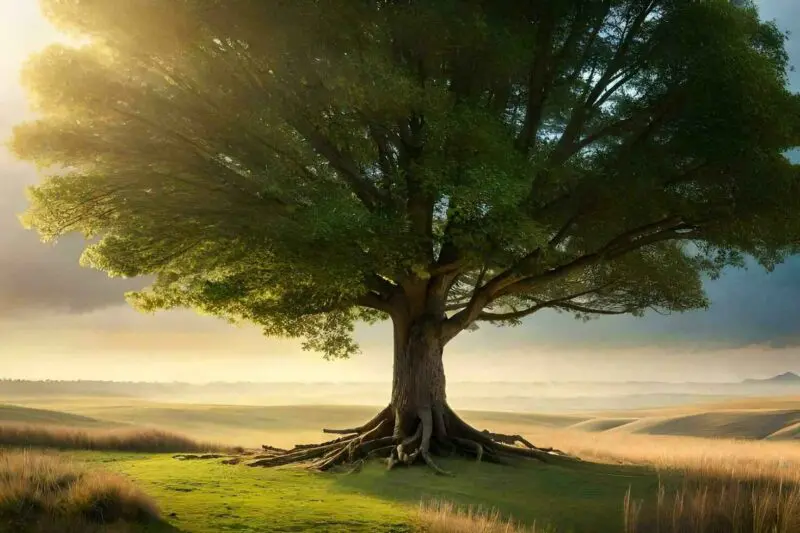The Tree of Life has long been revered for its profound spiritual meaning and symbolism. Across cultures and mythologies, it represents the interconnectedness of all living things and the cycle of life.
Its significance goes beyond its physical form, encompassing various interpretations that touch upon eternal life, spiritual growth, unity, divine connection, and the balance and harmony of the universe.
Found in biology, philosophy, religion, and popular culture, the Tree of Life serves as a powerful symbol that resonates with people seeking a deeper understanding of existence and their place within it.
By exploring its depths, we embark on a transformative journey within ourselves, unlocking spiritual growth, self-discovery, and a closer connection to the divine.
From the Kabbalah’s representation of the ten sefirot to the Tree of Life’s association with eternal life in the Bible, each tradition adds its own unique interpretation and symbolism to this ancient symbol.
In sacred geometry, it unveils the structural blueprint of the universe, while in Buddhism, it signifies the interconnectedness of all living beings. Hinduism represents the cycle of birth, death, and rebirth through the Tree of Life, and in the Quran, it grants eternal life in Paradise.

The Tree of Life can also serve as a powerful tool for self-assessment and personal growth. By using its framework, individuals can assess their progress in the journey of self-development, honing inner qualities, and letting go of ego.
This sacred symbol acts as a mirror, allowing us to reflect on our transformation and align ourselves with the divine.
Key Takeaways
- The Tree of Life symbolizes the interconnectedness of all living things and the cycle of life.
- It represents eternal life, spiritual growth, unity, divine connection, and the balance and harmony of the universe.
- Various traditions and religions have different interpretations and symbolism associated with the Tree of Life.
- It can be used as a framework for personal growth and self-assessment, allowing individuals to assess their progress and connect with the divine.
- Exploring the depths of the Tree of Life can lead to spiritual growth, self-discovery, and a deeper connection to the sacred within.
Tree of Life Symbolism in Different Traditions
The Tree of Life holds a significant place in various religious and spiritual traditions. Let’s explore how it is interpreted and symbolized in different cultures:
Kabbalah Tree of Life
In Kabbalah, the Tree of Life represents the ten sefirot, which are the attributes of God. Each sefirah represents a different aspect of divine energy and serves as a pathway for spiritual growth and understanding.
Tree of Life in the Bible
In the Bible, the Tree of Life is associated with concepts like eternal life, salvation, and the cross. It is a symbol of divine nourishment and spiritual sustenance, providing guidance and strength on the path of righteousness.
Tree of Life in Sacred Geometry
In sacred geometry, the Tree of Life symbolizes the structure of the universe and the balance and harmony of all living things. It is a representation of the interconnectedness of creation and the universal flow of energy.
Tree of Life and the Chakras
In various spiritual traditions and practices, the Tree of Life is aligned with the chakra system. Each chakra corresponds to a specific sefirah on the Tree of Life, representing the different levels of consciousness and spiritual growth.
Tree of Life in Buddhism
In Buddhism, the Tree of Life signifies the interconnectedness of all living beings. It symbolizes the unity and interdependence of all life forms and serves as a reminder of the importance of compassion, mindfulness, and the pursuit of enlightenment.
Tree of Life in Hinduism

In Hinduism, the Tree of Life represents the cycle of birth, death, and rebirth. It symbolizes the eternal nature of the soul and the continuous process of spiritual evolution and transformation.
Tree of Life in the Qur’an
In the Qur’an, the Tree of Life is mentioned as a tree in Paradise that grants eternal life and exquisite rewards to those who attain it. It is a symbol of divine blessings, abundance, and spiritual fulfillment.
Each tradition adds its own unique interpretation and symbolism to the Tree of Life, reflecting the richness and diversity of human spirituality.
The Transformational Journey of Self-Assessment with the Tree of Life
The Tree of Life provides more than just symbolic representation; it serves as a framework for personal growth and self-assessment. Through the lens of various traditions like Sufism and Jewish mysticism, the Tree of Life offers stages of transformation that guide individuals on the path of self-development and inner awakening. This transformative journey involves honing inner qualities, shedding egoic attachments, and connecting with the divine.
Within the Tree of Life, there are distinct levels of self-development, each representing a stage of transformation. One such progression is the concept of raw, cooked, and burnt. These three stages parallel the process of growth and maturation, inviting individuals to evolve and refine themselves throughout their journey. By cultivating inner qualities such as love, compassion, and wisdom, individuals progress from their raw, untamed state to a more cultivated and enlightened one.

Letting go of egoic aspects is a crucial aspect of the transformational journey with the Tree of Life. As individuals progress through the stages of self-development, they learn to release attachments to false identities and societal conditioning. This surrender allows for a deeper connection with the divine, emphasizing the spiritual nature of the journey. By aligning oneself with the divine within and recognizing the interconnectedness of all beings, individuals can experience a profound sense of unity and harmony.
“The journey of self-assessment with the Tree of Life is an invitation to embark on an inner quest, seeking not only personal growth but also a connection with the divine. It is a transformative journey that encompasses the honing of inner qualities, shedding of ego, and an awakening to the interconnectedness of all things.”
As a powerful tool for self-reflection, the Tree of Life enables individuals to assess their progress and realign their focus. It acts as a mirror to one’s inner landscape and offers guidance on areas that require attention and development. Through self-assessment, individuals can identify and nurture their strengths, while also recognizing and transforming their weaknesses. This process of introspection deepens the connection to the sacred within and fuels personal growth and transformation.
The Benefits of Self-Assessment with the Tree of Life
- Facilitates personal growth and self-awareness
- Guides individuals on a transformative journey of inner development
- Enhances the cultivation of inner qualities and virtues
- Helps in the process of ego dissolution and spiritual liberation
- Strengthens the connection with the divine and the sacred
The Tree of Life offers a profound and transformative journey of self-assessment. By delving into its rich symbolism and stages of transformation, individuals can embark on a path of spiritual growth, honing inner qualities, and connecting with the divine within themselves.
Conclusion
The Tree of Life is a profound symbol that holds spiritual significance across cultures and traditions. It represents the interconnectedness of all living beings and the cycle of life. Exploring the depths of this symbol can lead to spiritual growth, self-discovery, and a deeper connection to the divine.
By delving into the different interpretations and stages of transformation associated with the Tree of Life, we embark on a transformative journey within ourselves. It is through this inner exploration that we uncover our true nature and potential. The Tree of Life serves as a guide, offering wisdom and guidance on our spiritual path.
Through self-assessment and reflection, the Tree of Life becomes a powerful tool for personal development. It allows us to assess our progress, hone our inner qualities, and let go of ego. As we align ourselves with the sacred within, we open the doors to profound inner transformation.
May the exploration of the Tree of Life lead us to a greater understanding of ourselves and the world around us. May it inspire us to embrace spiritual growth, embark on a journey of self-discovery, and forge a deeper connection to the divine. Let the wisdom of the Tree of Life guide us on our path of inner transformation.
FAQ
What is the spiritual meaning of the Tree of Life?
The Tree of Life symbolizes the interconnectedness of all living things and the cycle of life. It represents eternal life, spiritual growth, unity of all living things, connection to the divine, and the balance and harmony of the universe.
How does the Tree of Life appear in different traditions?
In Kabbalah, the Tree of Life represents the ten sefirot, the attributes of God. In the Bible, it is associated with eternal life, salvation, and the cross. In sacred geometry, it symbolizes the structure of the universe and the balance and harmony of all living things. In Buddhism, it signifies the interconnectedness of all living beings. In Hinduism, it represents the cycle of birth, death, and rebirth, and in the Qur’an, it is a tree in Paradise that grants eternal life.
How can the Tree of Life be used for personal growth?
The Tree of Life can be a framework for self-assessment and personal development. Stages of transformation, such as raw, cooked, and burnt, describe the journey of self-development. By cultivating inner qualities, letting go of ego, and aligning oneself with the divine, individuals can deepen their connection to the sacred within.
What can be gained from exploring the Tree of Life?
Exploring the depths of the Tree of Life can lead to spiritual growth, self-discovery, and a deeper connection to the divine. It allows individuals to embark on a transformative journey within themselves, uncovering their true nature and potential.




